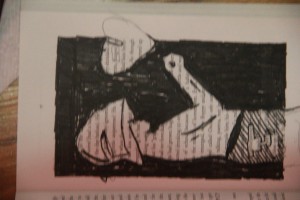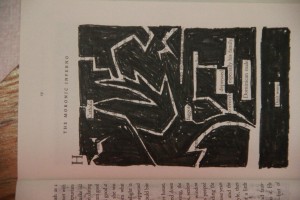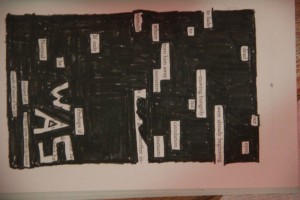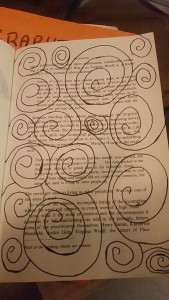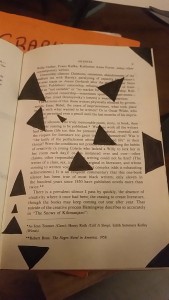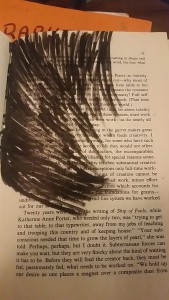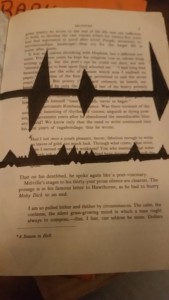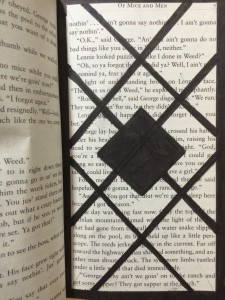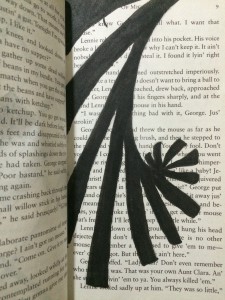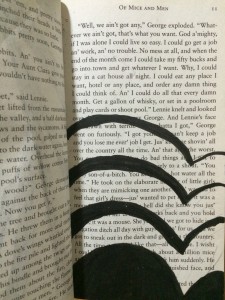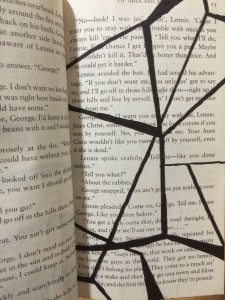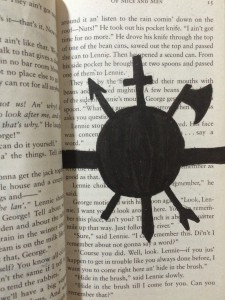Brandy Ortiz
Lives and studies in New York
Picture Perfect Family and Love Exists 2015
Pigma Micron Pens(0.2, 0.5 and Brush), Faber-Castell Brush Pen, scissors and various pencils(HB-6B).
While combining concepts from graphic design and linguistic language, Brandy Ortiz made compositions with themes that juxtapose from the original theme from the novel “Brimestone” by Douglas Preston and Lincoln Child. The theme for the pages she constructed shows love while the theme for “Brimestone” is thriller. “The Picture Perfect Family” shows the message from the selected text by making a frame within the margins. The frame was first made by using the pens to make an outline. Then with the Faber-Castell Brush Pen she inked the page while leaving out the selected text to be revealed. The message explains a family that enjoys getting together and the frame makes the text appear to be the picture. “Love Exists” has the text appear from cutting out certain words from various pages to show all on one page. The idea behind the message was that love is a great feeling to have in the world we live in. Most of the page is shaded by pencil and represents low key. The heart shows that love will always be there even when surround by darkness.
